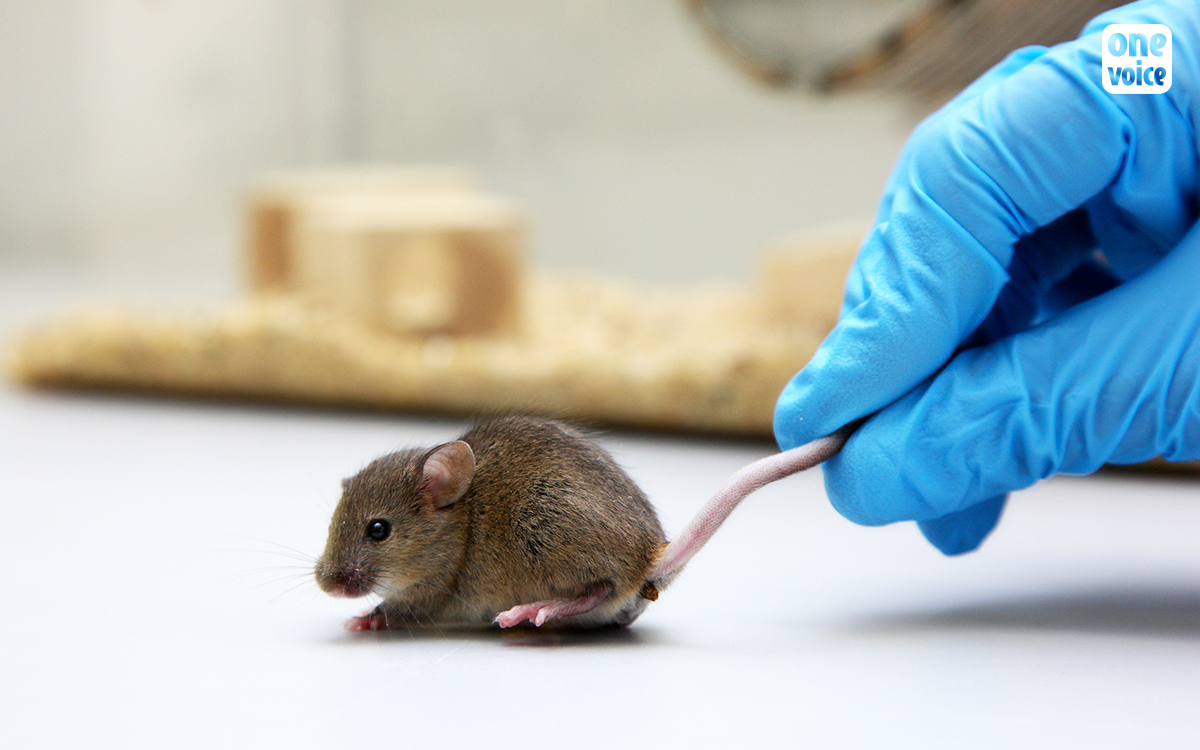

Experimentation: well done with the figures, nothing has changed!
It is not for the lack of demanding that the state respects the law. In May 2019, the statistical survey on experimental procedures completed in 2017 has just been released. Still as many victims, no progress, just a token gesture.
One Voice has worked hard to ensure that the State finally complies with European rules requiring Member States to provide annual statistics on animal testing: A complaint to the Ministry concerned, demonstrations before the European Parliament and several actions to denounce the lack of published data. At the end of April 2019, the official figures remained as those prior to 2016, a reassuring scientific follow-up.
Having campaigned it finally paid off! The famous figures were published on April 30th by the Ministry of Higher Education, Research and Innovation, accompanied by an explanatory note, very cosmetic, containing some surprises…
All species combined: 1,914,174 victims in 2017 compared to 1,918,481 in 2016. The State welcomes a decrease of 0.2%, all the more significant according to him, as more research establishments responded to the survey (+ 8.2%), suggesting a drop in the average number of animals used per establishment. But one wonders then what statistical base has this annual survey (the real number of respondents not being communicated)… Some labs may or may not have answered? Where is the scientific precision in these figures that we hoped for? The photo is blurred, but we are assured that it is a pretty image!
Experimental determination
It is also pointed out that 40,000 animals (+ 12%) are reused several times in different experiments. In such cases, a veterinarian must validate that the animal has “fully recovered its general health and well-being”. Something easy when you know the levels of well-being offered by the cages in these animal research facilities and the various types of trauma endured by them. “Well-being” here it becomes an obscene term…
Better! These regulated re-uses* are presented as a way to reduce the number of individuals engaged in experimental procedures. Does repeated abuse and a prolonged captivity really correspond to more “refined” procedures? The prolonged and repeated torture of these reused animals, ultimately the worst, is quite the opposite of the objective pursued by the European directive. Yet the state, basing itself on who knows what text, here claims to respect the wishes of Brussels. Let’s be serious here: if it is a question of minimizing pain and suffering, this cannot be the case when the same animals are tested several times in a row.
You can’t make a silk purse from a sow’s ear…
Finally, we are told that “in order to rationalize the use of animals in science, France continues to very actively promote the principle of Replacement, Reduction and Refinement“. If we applied this famous 3R principle effectively-replaces (by other methods), reduces (the number of uses), and refines (less pain inflicted), we should not only see the numbers of animal testing, but also the proportion of the cruelest experiments? However, this is not the case in these supporting figures: we have the 3Rs, but not the best results!
Get out of the fog!
“After three years of statistics collected according to the format imposed by the directive 2010/63 / EU, trends are starting to appear,” the ministry told us (to be confirmed in 2020 with regard to the 2018 figures). But by the way, what trends? None are emerging-the differences between the years have not even been calculated!-, except for a tenacious stability of the figures. If so many so-called efforts have been made in the research institutes and the ethics committees that oversee (but emanate from) them, then why don’t the numbers go down?
The explanation would be that most of the projects authorized are over several years (five at most). So, should we wait a few more years before France sees some positive results in European policy aimed at reducing the victims of animal testing?
Rather than stumbling over to apply ethical rules, without the number of victims or their levels of suffering decreasing, is it not time to stimulate the search for alternative methods that are humane for animals and to impose them as soon as they save lives? Isn’t pretending to do good and doing better when the numbers are unchanging, it makes a mockery of the world?
The only satisfaction is that the transitional regime established by the decree in France between 2013 and 2018 is over for projects launched under the old Directive 86/609 / EEC. The researchers had time to familiarize themselves with the concept of experimental procedures that define the thresholds and the degrees of severity to which animals are victims. Which in effect has changed nothing for the latter.
*Article R. 214-113 of the rural code